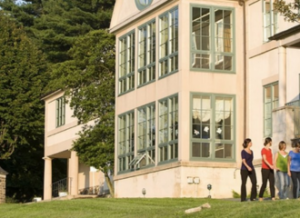Published by: Philly Voice
Written By: Courtenay Harris Bond

One year ago, a complex web of stressors led Rei to attempt suicide.
“I’ve been on my path to recovery for about a year now,” said Rei, who identifies as a-gender. “It’s been a really hard year. It’s been a journey.”
Along the way, Rei, who wanted to use just their chosen name for privacy, learned that in addition to their struggles with chronic pain, depression and post-traumatic stress disorder, they also were battling an eating disorder – “which I didn’t even know I had,” Rei said.
Rei, 34, accessed treatment at The Renfrew Center, the first residential eating disorder facility in the country, which started in 1985 as a single inpatient treatment facility for adolescent girls and young women on its 27-acre campus in Northwest Philadelphia. Renfrew now offers inpatient, outpatient and virtual treatment for eating disorders nationwide, including services at facilities in Center City and Radnor, Delaware County. Renfrew has helped more than 100,000 cisgender girls and adult women, as well as transgender and nonbinary individuals.
Research shows that LGBT adults and adolescents experience a greater incidence of eating disorders than their cisgender counterparts. LGBTQ youth who have been diagnosed with an eating disorder at any point in their lives are nearly four times more likely to have attempted suicide in the past year than those who have never been diagnosed with an eating disorder.
People in LGBTQ+ communities also are at a higher risk of being exposed to hate crimes and being isolated than cisgender people, which can heighten anxiety and distress and aggravate struggles they may have with body image and food, said Kristin Szostak, regional assistant vice president at Renfrew.
Renfrew strives to be as “inclusive as possible with the priority to create a safe space that is compassionate and understanding,” Szostak said. “While every team member may not have that lived experience, we still want to be able to provide that compassion, that connection and that sense of humanity. … Everyone can relate to an emotion while every team member may not have that lived experience.”
Read the full article here.



